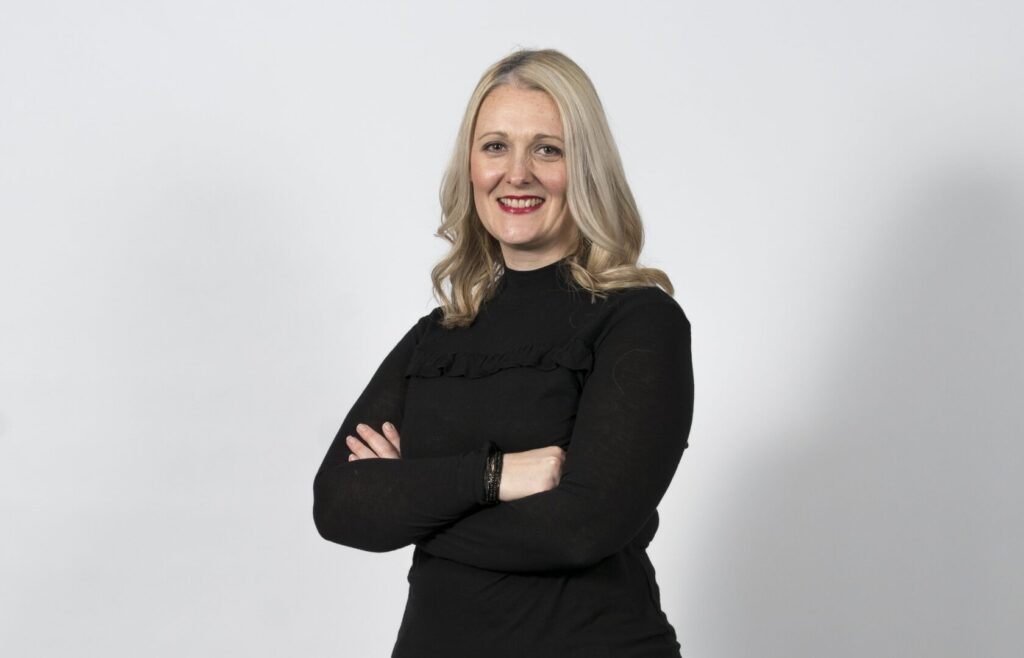The latest round of gender pay gap data suggests the UK IT channel is making tangible progress on gender pay and diversity.
On average, the resellers and MSPs IT Channel Oxygen looked at have seen their percentage of female staff rise from 26.1% to 28.8% since mandatory pay gap reporting was introduced in 2017/18.
At the same time, their mean and median pay gaps have narrowed, from 25.7% to 22.5% and from 20.8% to 18.5%, respectively.
We asked seven industry leaders to give us their interpretation of the data.
Julie Simpson, Founder and CEO, ResourceIT

This makes very interesting reading and poses the question – do these things really matter?
What has gender equality and pay-gap reporting got to do with running a profitable business? Are we wasting time as leaders focusing on this when we have, some would say, more important things to worry about?
The fact is, in today’s society, with the increasing costs of living, it’s all a bit sad that these issues still even exist.
Yes businesses are better, stronger and more profitable with diversity (of all types) embedded. The wider your diversity, at all levels, the wider your value propositions become and with that the extension of your addressable market opportunity. Essentially faster growth. Without equal pay diversity becomes a dream not a realistic goal.
But…
How the hell are families supposed to achieve equality and make equal contribution (assuming one parent is female and one male, which is not always the case of course) when the costs and access to effective childcare make it impossible for parents?
You see, we cannot change that women have the children. And in my experience, the majority of women WANT to be the primary carer. I absolutely felt like that myself once upon a time. Whether we like it or not as women, we have less time available to focus on our careers and therefore can often be slower (and less motivated) to ascend.
This means that women often take easier, less senior jobs and I think this fact alone massively skews the figures.
Particularly when full-time childcare, nursery for example, cost as much as paying a second mortgage!
Don’t even get me started on the stupidity of the six-week half-term school breaks, plus the six-week summer holidays which dictate that even parents (usually Mums for the reasons I’ve shared) with school age children are a) consistently compromised trying to manage job and childcare, and b) usually have to fund it until the kids are 12 at least! This holds us back in our careers more than anything else.
Secondly, we simply are not addressing the right education in schools which means our pipeline is lighter for females particularly.
I remain aghast that our archaic curriculum does not teach what it needs to teach. IT education is poor at best, no IT industry education is offered (the teachers have absolutely no clue about our sector), and even at degree level, the subject is years behind where it needs to be.
Hence the launch of Tech Channel Ambassadors led by Hayley Roberts and Hayley Mooney which I hugely support. A small punch at the moment given the size of the issue, but a punch none the less.
It’s great that businesses like Avanade are making great progress. But that kind of progress takes a huge amount of cash. Softcat remains a shining light in the channel for being proactive, but again is a cash-rich business that can afford the focus – and then with fantastic people like Miriam Murphy, leading TD SYNNEX Europe, Sam Mudd interim CEO of Bytes, Joyce Mullen leading Insight and Clare Barclay leading Microsoft UK there is no doubt we have some incredible female leaders standing as role models for women everywhere.
You can’t be what you can’t see so these leaders should help to demonstrate that women can lead as well as men and should be paid the same – but that’s not the issue.
80% of people in this country I believe are employed by small businesses who simply cannot afford the kind of dedicated focus and investment afforded by corporates, so while progress is being made at the top end of the channel, it’s the lower end that has the most impact.
It’s all about the diabolical support (and astronomical cost and availability of childcare) and the frankly Dickensian education in our schools, colleges and universities that make progress so slow.
I wonder what it will actually take to fix it and how many years the crusty old guys in control of these decisions will be allowed to continue to remain solidly behaving like we are still in the 1950s, where the man went to work and the woman put the tea on the table and looked after the kids?
Anushka Davies, Head of Employee Engagement, Diversity & Inclusion at Softcat

It’s been interesting watching organisations in the channel focusing on bringing in more female talent, and it’s positive to see that over the seven-year period, the % of female staff is moving in the right direction.
A lot of organisations I speak to in the channel have focused on working with schools, colleges, and universities to bring in women into our industry, and often they will start at a junior level. A huge amount of work has been done to get students interested in the IT industry, which has helped shift the % of women across our organisations.
Whilst the mean and median pay gap has not reduced, it will be more interesting to see how organisations look to develop and progress women in their organisations to help reduce the pay gap in the longer term.
It’s positive to see that the % of women in the top quartile is increasing steadily, therefore with further progression and development opportunities for women, this will continue to move in the right direction.
We are seeing more women across the industry operating at senior level and being fantastic role models for the future generation. There clearly is more to be done across all our organisations and I’m excited to see how our industry works on reducing the pay gap over time.”
Hayley Mooney, co-founder of the Technology Channel Association (TCA)

This data is compelling and intriguing.
It indicates that while we believe we are performing well and certainly heading in the right direction, there is still a considerable distance to cover to attain true gender balance, not to mention pay-gap equity.
As you’re aware, this issue is very dear to me, and I am committed to continually promoting awareness among girls about the tech industry until we see tangible progress. It was one of the fundamental motivations for establishing the TCA with Ian [Kilpatrick], Hayley [Roberts], and our team. We are the ones who can effect change – it is our responsibility as an industry to take charge of improving these statistics.
Young females are not fully aware of the career opportunities available in the IT channel, and this needs to change. It’s encouraging to see the progress made by the larger VARs in this area but collectively, we have a responsibility to assist resellers, MSPs and VARs in leveraging existing experiences to also enhance female representation in their businesses.
By joining the TCA, you gain access to a platform powered by Hive Learning (The Leading AI-Powered Skills Academy Platform | Hive Learning), which provides standardised content that enables your teams to become ambassadors and promote our exceptional channel in schools.
As the TCA progresses, we will develop content that not only addresses gender diversity but also other diverse and inclusive targets, such as BAME communities, socio-economic and educational diversity, and neurodiversity. For the time being, let’s come together into schools to speak to young girls, starting as early as primary school, to ignite a passion for innovation and encourage them to pursue future careers alongside us.
Alex Tatham, Executive Director, Westcoast

Firstly, any change is welcome and you can see from the trends on those graphs that there has been a positive change.
Often we talk about a gender pay gap as ‘good heavens, you’re paying men more than women’, but I don’t believe that’s the case. There just aren’t enough senior women, and that creates the gender pay gap. Having more women in the industry is how that top quartile is eventually going to be fixed.
This industry is still gender imbalanced, but it’s gettering better. We know there’s more work to be done. Having more women in the senior levels of the business and highlighting their career success stories creates a pull through effect.
The question I would pose is how much of that change has been active, and have those resellers been proactive? And I think the overall feeling in the channel at the moment is that there has been a real drive to try and get more female staff into the business, and it’s great to see.
I think the pandemic has also had an impact as more people are allowed to work from home, and that attracts more females staff generally. The ability to work from home has created more of a dynamic in the industry.
Lyndsey Charlton, COO, Daisy Corporate Services

I think there’s definitely been progress, and that there’s more progress to be had.
At Daisy, we have gender diversity as one of our KPIs and key initiatives. As part of that we’ve implemented a women in leadership programme. The second cohort is just starting this year so that we can make sure we get good progression and promotion, which will obviously help with that pay gap piece.
We have got challenges in more of your technology roles, so I think that there’s still a lot more to do. But I think it’s probably better than it has been.
Laura Bouchard, Former Microsoft and Apple channel leader (currently Non-Executive Director at CloudKubed)

Progress is evident, yet there remains a collective responsibility to do more. A lack of role models in channel perpetuates the issue, particularly affecting women who may struggle with confidence to step forward. Encouragement and support play pivotal roles in fostering a better balance.
Lessons from my experiences, such as those at Microsoft, highlight the importance of proactive measures. Practices like ensuring gender-balanced panels and diverse candidate pools in hiring processes are crucial. While it may require additional effort and time, the commitment to inclusivity is paramount for improvement.
Graeme Watt, Non-Executive Chairman, Softcat

I think the industry has put in some amazing energy into inclusion as a driver to obtain greater diversity – particularly around gender and ethnicity. From a gender perspective we know we are challenged by the sales and technical nature of the channel and our industry.
It takes time to move the needle – things are moving in a positive direction but there is much still to achieve. More people need to report on gender pay and show transparency to help drive further progress. On gender specifically there is no reason why all companies can’t get close to gender parity over time.
We want and need diversity of thought and experience too so there is more we can do to create other ways of recruiting that diversity into our industry – gender and ethnicity is a good place to start but it is tacking only part of the problem.
I think our efforts have to be at grass roots level and at senior manager level – by and large we are still severely lacking the required diversity levels at management and executive level.
From a pay gap perspective, I don’t believe that in this day and age organisations are paying less to some than others for the same role unless there are performance bands attached too. It is a fact that women are less attracted to technical and sales roles that pay more. I think the industry is taking good steps to change including Softcat where the team has put in a huge effort in the recruitment process through education and awareness about what these roles really entail and the huge support people have access to be successful.
But again a strong action plan to which people are committed to action is key – knowing that it will still take quite some time.
Doug Woodburn is editor of IT Channel Oxygen


















